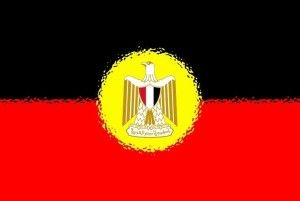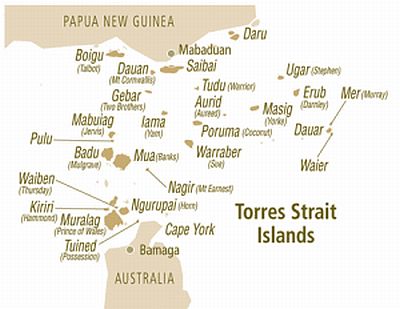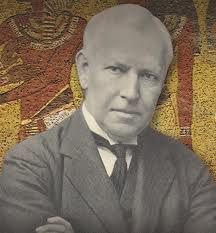Wake Up World April 7 2014
 We had already established Frederic Slater’s impressive credentials and inclination to accept Australia’s ancient Egyptian connection, a concept which in the 1930′s had a receptive audience and eminent supporters. Yet we were still experiencing some difficulty digesting the level of mainstream acceptance of this connection, in both public and academic circles, that was evident in the 1930s.
We had already established Frederic Slater’s impressive credentials and inclination to accept Australia’s ancient Egyptian connection, a concept which in the 1930′s had a receptive audience and eminent supporters. Yet we were still experiencing some difficulty digesting the level of mainstream acceptance of this connection, in both public and academic circles, that was evident in the 1930s.
[For full details, please read Com-piracy: How Government Suppressed Evidence of Ancient Egyptians in Australia]
The scope of mainstream consensus and the calibre of experts involved was unexpectedly commendable. However one question that we felt needed to be addressed relates to whether this talk of ancient Egyptians in Australia began in the 1930’s, or was Slater picking up the baton previously held by even more adventurous academics?
What we were unaware of when researching that earlier article was that the concepts reported by Australia’s mainstream press in the 1930′s were actually old news. Such talk of ancient Egyptian contact had been a topic often discussed in Australian media decades before Slater or Elkin (Professor of Anthropology at Sydney University) publicly approached the subject.
Mainstream Media Circa 1914
A lengthy article published in the Sydney Morning Herald newspaper on July 20, 1914 was introduced by a sequence of four headings: “Mystery of Man. Stories in Skulls. Egypt and Australia. ProfessorElliot Smith Amazed”.
Among his many other professional distinctions, Sir Grafton Elliot Smith (1871-1937) was a highly decorated professor, Doctor of Medicine, chair of Anatomy at the University College London, and author of “The Ancient Egyptians and the origin of Civilization” (London/New York, Harper & Brother 1911). Considered to be one of the greatest scholars not only in Australia but the world, Smith was knighted for his services to academic research. His major interest and passion was anything found anywhere that related Egyptology, and in this respect Australia certainly was fertile ground.
From the 1914 Sydney Morning Herald article:
“My investigations in Sydney have resulted in some interesting discoveries, confirming certain theories I have long held”, said Professor Grafton Elliot Smith, the gifted Australian, who is today Professor of Anatomy at the Manchester University, to a ‘Herald‘ reporter on Saturday. “The wealth of the material lying to the hand of the anthropologist in Australia has amazed me…. There is nu embarrassing amount of material waiting to be worked up here”, he said.
Elliot Smith was quite taken by the “immense quantity” and quality of archaeology “since I have come here”. He came with no predisposition and stated that “he did not know until now that the evidence was so definite and positive as it is”. Elliot Smith was “especially interested in the fact that the Australian aboriginals (sic) and the neighbouring people have customs of mummification which are very similar to the ancient Egyptian method”.
“Devious Means”
There was one region, the Torres Strait Islands, which Smith saw as the first priority in his research. So startling and precise were the similarities in evidence on the islands, he held “no doubt at all that these customs have been derived by some devious means from the Egyptians”. He did not speculate as to what these “devious” strategies were, only that it could not be due to coincidence but by design. And indeed, he was left with no other option; the replications were too many and refined that, irrespective of who or why, there had to have been contact between ancient Egyptians and Torres Strait Islanders. There was simply no other explanation.
 “I have been looking at mummies from Darnley Island, in the Macleay Museum at the University, and the specimens in the Australian Museum. It is remarkable how curiously they have retained a lot of the old Egyptian customs”.
“I have been looking at mummies from Darnley Island, in the Macleay Museum at the University, and the specimens in the Australian Museum. It is remarkable how curiously they have retained a lot of the old Egyptian customs”.
Briefly breaking chronology and returning to a familiar timeline, the 1930’s, there was an article printed in The Mail newspaper (Adelaide) on July 27, 1935, written by Dr. Donald Thomson(Doctor of Science with a Diploma in Anthropology) which provides a setting and inspiration for his (then) upcoming archaeological expedition to Cape York. Discussing the mummification processes of the region, he made reference to Smith’s follow-up examination of the Darley Island mummy.
This is where the plot thickens….
According to Dr. Thomson, Smith detected “evidences of the particular technique of embalming that was practiced for the first time in the twenty-first [Egyptian] dynasty”. But it doesn’t end at one random cross-continental coincidence. Thomson continued that Smith “based his claims on its Egyptian origin chiefly upon certain technical aspects of embalming – notably upon the site of the incision for the removal of the viscera”.
What surely defies anything other than close and personal contact is that another mummy removed from Darnley Island (also known as Erub) in the eastern Torres Strait was examined by Elliot Smith’s counterpart, both in interest and esteem, Sir Raphael Cilento. Cilento, a notable Australian medical practitioner and one time Director-General of Health and Medical Services, declared “the incisions and method of embalming to be the same as those employed in Egypt during the 21st and 23rd dynasties over 2,900 years ago”.

Contact confirmed, case closed. Two of the most qualified academics in Australia not only agreed that Egyptian mummification practices were adopted in the Torres Strait, they both independently nominated the same dynasty and time scale, based on their respected professional opinions.
What needs to be appreciated is that Sir Elliot Smith was not alone in his assessment, nor was he relying solely upon apparent replications of Egyptian mummification techniques. An account published in the Sydney Morning Herald newspaper on 20 December 1924, entitled Birth of Civilisation: Elliot Smith’s Theory, provides a better idea as to the quantity and diversity of the archaeology at Elliot Smith’s disposal.
The evidence became overwhelming. One of the prettiest incidents is a story told by the Rev. Dr. Fox, a missionary on Sun Christoval (sic) in the Solomons. He sent to Elliot Smith and Rivers a description of the mastaba tombs and the doimens, that are to be found on the island, concluding his description by asking whether they could explain a strange headdress worn by the carved figure upon one of the tombs. As he gave them his picture of the image he was unaware that he was describing to the delighted ethnologists a characteristic of the statutes of Cheops, one of the builders of the pyramids.
The reason why Cheops’ headdress was engraved into rock in the Solomon Islands is no different to the motivations behind the construction of a canoe used to ferry the dead to the after-life in Arnhem Land. After the brain is excised through the nose with “a bone instrument…. they embalmed the corpse and rowed it 2 miles westward out to sea in a canoe shaped like the ‘Boat of Ra’ of the Egyptians, for internment on an island of dead”. For it is there that the Original soul is judged; “Depending upon the soul’s actions the recently deceased would gain passage to the after-life (Purelko) or be devoured by a crocodile”. The ceremony was in direct accordance with Egyptian mythology, where “Thoth acted as a pilot leading the soul to Osiris to be judged”. If the soul’s errors outweighed its just deeds, the crocodile God (Ba) consumed the sinner.
Consistent to a recurring concurrence, the ceremonies are identical. The only issue left to debate relates to who was the initiator.
Colleagues in Arms
Again, as it was with Slater and his impressive list of colleagues, Grafton Elliot Smith was not alone in his opinions. W.J. Perry, author and Professor of Comparative Religion at the University of Manchester, was a staunch advocate of Smith. In fact, he went into great detail in his book, Children of the Sun: a Study of the Egyptian Settlement of the Pacific, describing how an ancient “archaic civilisation” of “sun worshippers” believed “to have had its origin in Egypt” spread across the globe, paying particular focus to “evidence in Australia”. According to Perry:
[The] late Dr. Rivers investigated the custom of preserving the dead…. discovering convincing similarities between their methods and those of the ancient Egyptians. His conclusions were confirmed by Elliot Smith’s discovery that the natives of Torres Straits Islands preserved their mummies by exactly the same methods as those used in pre-historic Egypt.
As it was with Slater, there are hints that Smith was inspired by earlier archaeology and research. Both highly credentialed scholars were supported by other academics, and in each investigation the ancient connections between Egypt and Australia were established to their satisfaction. In evidence is 25 years of mainstream press coverage throughout Australia, reporting on all manner of archaeology and expert declarations testifying to this ancient alliance.
What is even more revealing is the lack of alternative arguments or theories. As we are intimately aware, there was ample opportunity for the research or findings of other scholars to be cited, doubting or even challenging these men. Yet no academics challenged their conclusions, even though it is their role and brief to do so, to ensure impartiality is maintained. From 1914 through to 1939, we cannot find one piece of research, news clipping or opposing paper about the many sites and pieces of evidence these men presented. There was nothing published in opposition, just their expert accounts without so much as a grumbled word to the contrary.
It wasn’t until the period between 1938 and 1939 that government authorities acted to suppress the conversation of ancient liaisons. Archaeology was literally bulldozed into the ground, threats and pressure were applied, academic careers were put in jeopardy, and an officially sanctioned vacuum of silence imposed — one which reigned for the next 73 years.
 About the author: Steven Strong is an Australian-based researcher, author and former high-school teacher with a background in archaeology. He was involved in the formation of a Graduate Diploma of Aboriginal Education for the NSW Department of Education, writing units on Traditional Law and Contemporary History. He also co-authored the highly successful “Aboriginal Australia: A Language and Cultural kit”.
About the author: Steven Strong is an Australian-based researcher, author and former high-school teacher with a background in archaeology. He was involved in the formation of a Graduate Diploma of Aboriginal Education for the NSW Department of Education, writing units on Traditional Law and Contemporary History. He also co-authored the highly successful “Aboriginal Australia: A Language and Cultural kit”.
Together with his son Evan, Steve has co-written 4 books: Constructing a New World Map, Mary Magdalene’s Dreaming and Forgotten Origin (published by University Press of America) and their latest publication Shunned, which thoroughly refutes the Out-of-Africa theory of human history and examines the archaeological and DNA evidence that suggests Australia is where modern human beings derived.
